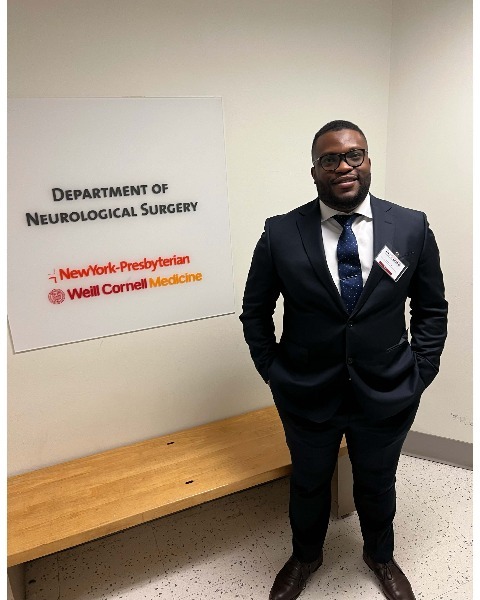Trauma
Patients with Traumatic Spinal Injuries Treated in a Low-Middle Income Country: What Happens After Discharge?
Friday, February 21, 2025

Chibuikem A. Ikwuegbuenyi, MD
Research Fellow
Department of Neurological Surgery, Och Spine at NewYork-Presbyterian/Weill Cornell Medical Center
Presenting Author(s)
Disclosure(s):
Chibuikem A. Ikwuegubenyi, MD: No financial relationships to disclose
Introduction: Traumatic spinal injuries (TSI) represent significant global health challenges in low- and middle-income countries (LMICs). In a cohort of patients suffering TSI from a major East Africa center, we sought to address long-term outcomes after hospital discharge through the following objectives: a) describe who was successfully contacted post-hospital, b) report post-hospital complications, and c) assess predictors of successful post-hospital contact, and post-hospital complications.
Methods: A retrospective cohort 2016-2021 from an institutional TSI registry was the source of patients and contact methods. Telephone calls were made to the primary telephone number between 06/2022 and 04/2023, and a subjective neurological assessment was performed using a questionnaire. Our outcomes were successful post-hospital contact and post-discharge complications. Predictors of each outcome were assessed through univariable/multivariable logistic regression.
Results: Of the 466 TSI patients treated from 2016-2021, 40.6% were successfully contacted at a median follow-up period of 29 months. The median age was 34 years, with most patients being male (85.8%). Among those contacted, 84.8% experienced post-discharge complications, including muscle spasticity (61.4%), pressure ulcers (35.9%), and mortality (21.2%). Most patients reported a perceived improvement in their neurological status. Key factors predicting successful contact included undergoing surgery, involvement in road traffic accidents (RTAs), and more recent hospital admission dates following TSI (2019-2021). Employment post-injury was associated with fewer complications (OR 0.20, 95% CI 0.04-0.76). AIS-A at discharge was associated with a significantly increased mortality risk compared to AIS B-E (OR 15.58, 95% CI 5.80-50.46, p< 0.001).
Conclusion : This is one of few studies to report on post-hospital follow-up using telephone contact for TSI in an LMIC. Among the contactable patients, there were high rates of morbidity and mortality and low rates of employment, showing the considerable medical, social, and economic impact of TSI in this young population and the need for rehabilitation and support services post-discharge.

.jpg)